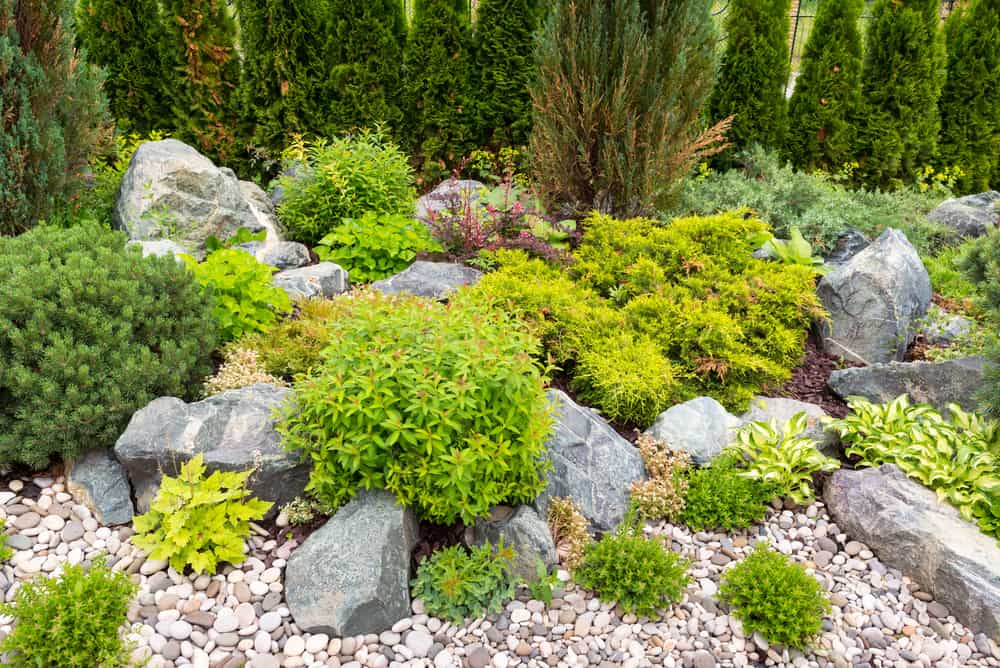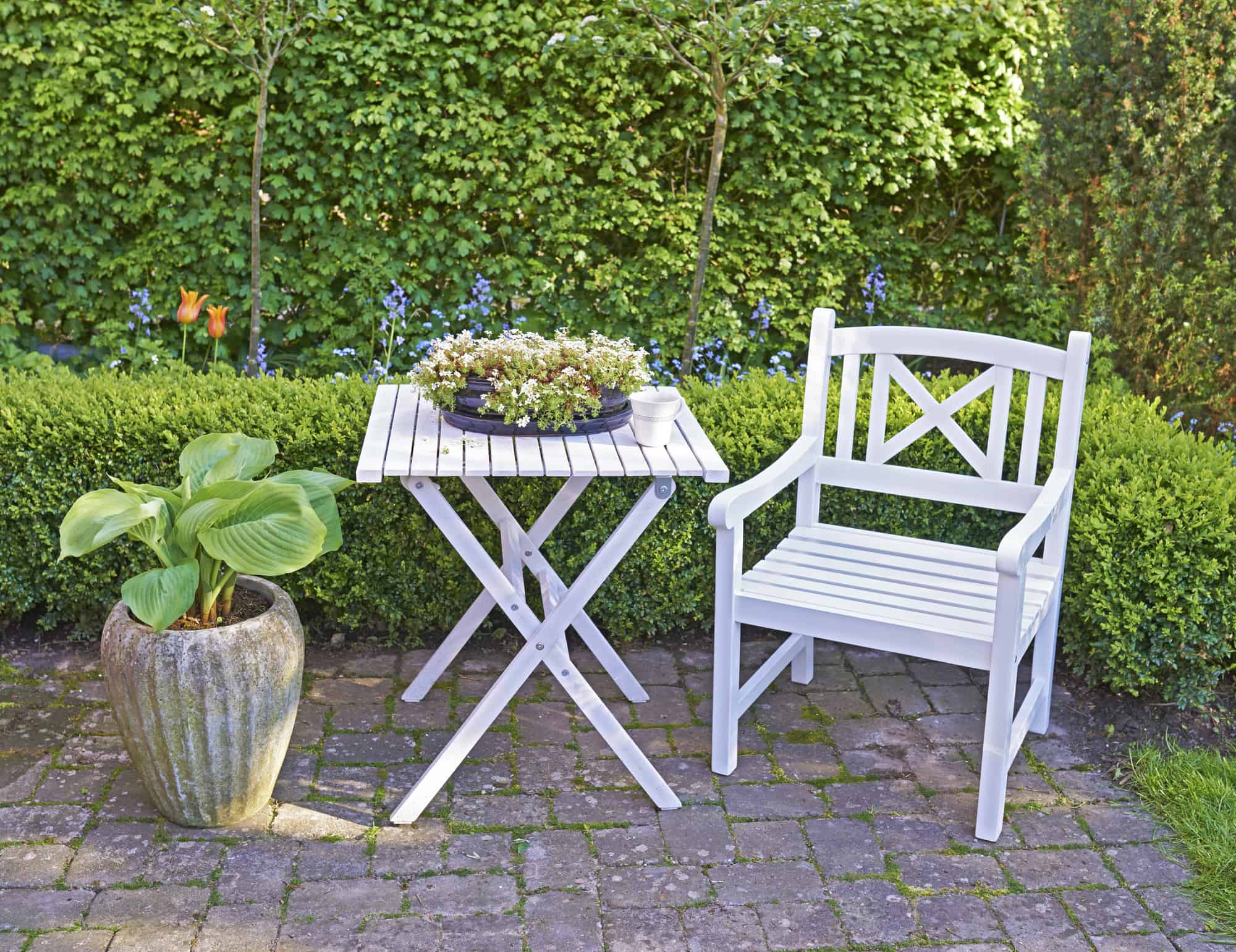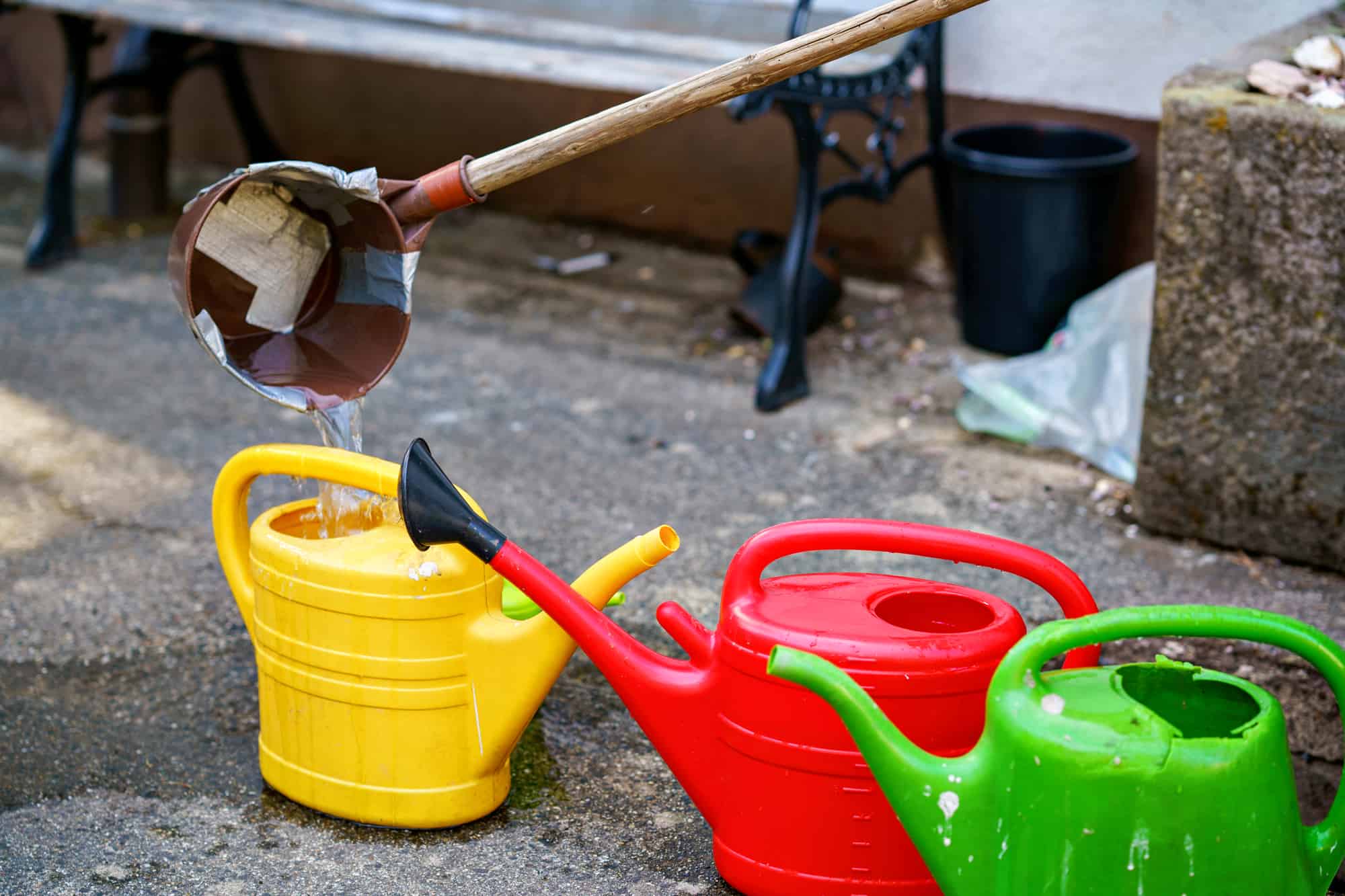Xeriscape is a landscaping idea that works to conserve water through the planting of an attractive, useful, water-efficient home garden. While often associated with desert climates, xeriscapes can save you money no matter where you live. The savings come from your water bill as well as the cost of maintenance for fertilizers and other soil amendments.

Photo: Deposit Photos
You can begin to create a xeriscape almost any time of year. Autumn and spring are best for planting in most climate zones, but you can get started through winter in the mildest areas. Add soil amendments such as natural compost when planting. Mulch before cold weather hits as well as after the ground warms up in spring to discourage weeds and conserve water during the growing season. Summer and fall are best for removing lawns (see Step 2 below). Research and planning can be done throughout the year.
To create a xeriscape, plant slow-growing, drought-tolerant, native plants that need little or no watering. Here are our guidelines for planning a xeriscape, with a focus on saving money from start to finish:
Research your climate zone
Check the USDA plant hardiness zone map to find your climate zone. Search your state’s Cooperative Extension office website for information about drought-tolerant plants, landscape plants and native plants recommended for your area. Consult with local nurseries for suggested plant lists and advice on plants for specific problem areas in your region, such as salt water or high wind, or animals such as deer. Look for ideas for native plants or introductions from climates with similar rainfall and temperatures.
Limit or remove the lawn area

Photo: Deposit Photos
Use water hungry lawns only for play or recreation areas and plant ground covers or use mulching materials everywhere else. If you need to remove a lawn, dig out or till the sod in any season as long as the ground is not frozen. You can smother the lawn by covering with plastic, which is most efficient in the high heat of summer.
For a more eco-friendly solution, apply biodegradable cardboard or newspaper plus mulch summer through fall. By using materials that biodegrade, fall planting can begin immediately. With any smothering method, the grass should be dead by spring. If you used biodegradable materials, the organic matter you’ve added will have been incorporated into the soil by earthworms and other organisms. For more information about removing existing lawns, read this article from Fine Gardening about 4 Ways to Remove Sod.
Amend and protect the soil
Amend the soil with compost. Plants establish most easily when planted in native soils without the addition of amendments other than natural compost. Compost can be made for free from yard trimmings such as leaves, small branches and grass clippings along with kitchen waste. This creates a recycled, cheap soil amendment that continuously improves soil condition. Compost helps to hold in available water and nourishes plants. Check extension office publications or gardening books at your local library for more information about materials and techniques for both compost and mulch.
Protect the soil with mulch. Mulch or cover the soil to conserve water, as well as fight pests and weeds. Most major metropolitan areas have sources of free or low-cost compost or mulch. For sources, check local government websites, recycling centers, Craigslist, landfills, zoos, landscape companies or orchards. Ask neighbors who have lots of trees or grass if you can help trim and remove their yard waste in exchange for some of the material. Ask local cafés for coffee grounds.
Cardboard and newspaper are suitable mulching materials, if topped with a layer of organic material. If there are lots of rocks in your soil, collect and use them under eaves, along patios and driveways, or as an attractive dry river bed in the landscape. Read All About Garden Mulches from Better Homes and Gardens.
Planting a xeriscape
Choose the right plants. Plants in your xeriscape must be well adapted to the average temperature range for your climate zone. Use native plants and non-invasive plants from other parts of the world, if they have climates similar to yours. Carefully choose plants that thrive in your hardiness zone to avoid planting failures. Buy plants in bulk in spring and fall, when local nurseries often hold plant sales. Save money on new plants by buying younger plants in smaller containers. Use mulch and leave plenty of space for plants to grow to maturity. Choose a mix of fast-growing and slow-growing plants.
Consider the available water. Several elements affect the need for additional watering. Consider whether you have areas of deep shade or full sun. Also look at conditions such as the slope of the land or the presence of structures such as rocks, patios and driveways .
Adjust the landscape design to the weather. Locate trees to provide cooling shade for your home in warmer months. Use deciduous trees to provide warmth in winter. And use evergreens where you need a windbreak.
Group plants correctly. The placement of plants in the landscape should mimic an oasis. Plants that require the highest use of water belong near the home. Use plants that need little or no irrigation further away to form a naturalized home garden landscape.
How to water your garden wisely

Photo: Deposit Photos
While you may wish to transition to a yard that requires no additional watering, limited areas of irrigation are consistent with a water-wise xeriscape. To conserve water, use drip irrigation, low-flow targeted sprinklers or automated systems. Reduce or eliminate watering on rainy or cloudy days. Water infrequently but thoroughly enough to encourage deep root growth that contributes to well-established plants that need watering only during long, dry spells.
If you enjoyed this article, you might like:
